Phoenix artist, Julie Gilbert Pollard, paints in watercolor in a fluid, painterly manner. Her painting style, while representational, is colored with her own personal concept of reality.
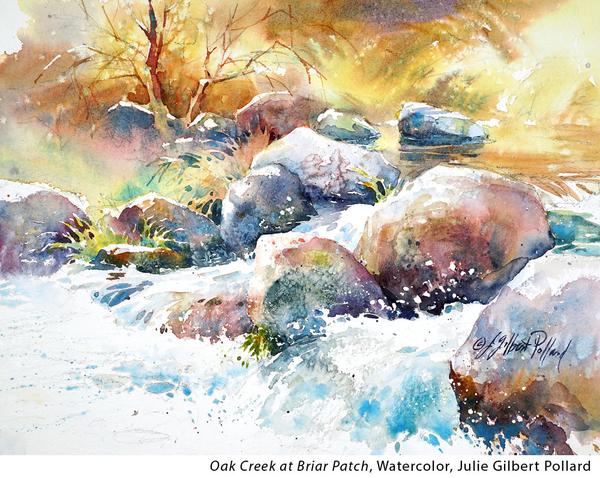
What’s the biggest struggle you see your students facing with watercolor? What advice do you give them?
Julie Gilbert Pollard: First, understand that chances are you will never master watercolor. I know I won’t! Think of your relationship with watercolor as developing a partnership with it, because watercolor has a mind of its own!
Think of the difference between driving a car and a boat. Both require all our attention and skill – BUT water continues to move as long as it is still in a fluid state. Since it doesn’t “stay put” we need to learn and practice various methods, strategies and techniques that help us to cope.
Studying painting is kind of like learning a new language. This language encompasses vision, taste, subject and color choices, color theory, drawing/shape-making skills, analytical problem-solving skills, knowledge of the principles and elements of design, eye to brain to hand to brush coordination – and more and not necessarily in that order. All of these sensitivities and skills work in concert. There are so many elements involved in painting, it can seem daunting. Instead – think of it as an adventure!
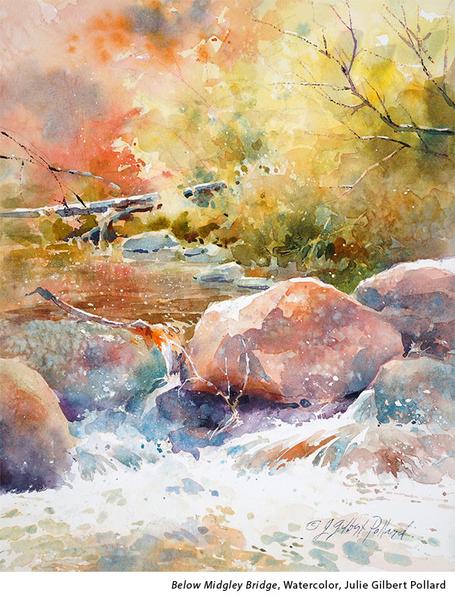
What work do you do even before you begin painting?
Julie Gilbert Pollard: I think about Simplification:
Composition
Process
Color palette
To this end there are several preliminary studies I have employed regularly over the years. My current favorite is the 4-step sketch.
What I really want students to understand is the objective for doing these simple 4-step studies – which is to simplify several critical aspects of the proposed painting in order to make the “real” painting easier to accomplish.
Additionally, I would love for them to experience the sense of freedom that comes from not caring about the outcome, but to simply enjoy the process – and then to allow some of that freedom to carry forward into the actual “painting”.
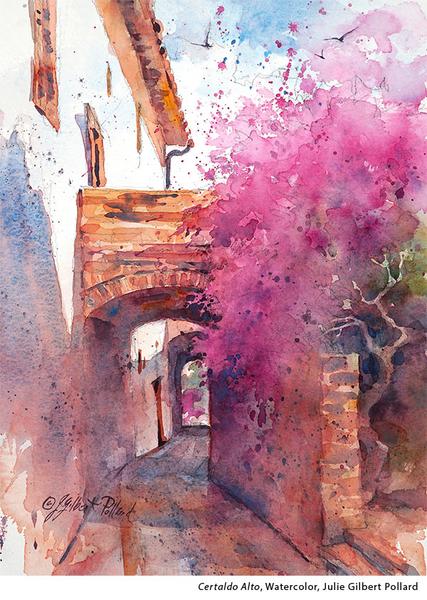
In terms of Simplification, I’m referring to:
Drawing & Composition – largest, most important shapes only
Process – traditional “light to dark”, at its most basic
Values – learning to see and separate the reference photo into 3 basic values
In the “real painting” as we begin to use “fancier” techniques, more detail, creative color, etc., we will probably find it easy to get “bogged down” and even confused as to how to accomplish our goal as we attempt to capture our mental image of a beautiful painting. When that confusion strikes, it is so helpful to have a “simple plan” as backup.
Our goal with these studies is NOT to produce a “painting”, but a study that is a reasonable interpretation — and most important, the essence of the subject!

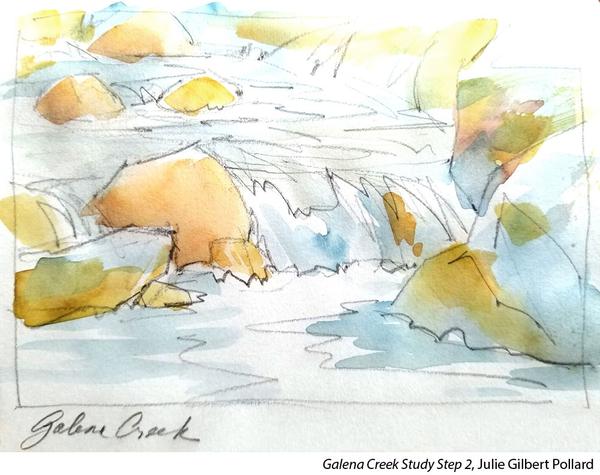


Planning through the use of preliminary studies is time-honored. While it’s true that there are painters who seemingly don’t need to do studies, the rest of us do.
Planning is not a guarantee of success – but having studied ahead of the actual painting gives us insight and practice and helps de-confuse the issues we’re faced with in a particular painting.
The experts tell us to paint what we know. The more we know and understand about a subject, the easier it is to paint it. I usually need all the help I can get! But I also find the studies fun to do.

Phoenix artist, Julie Gilbert Pollard, paints in oil and watercolor in a fluid, painterly manner. Her painting style, while representational, is colored with her own personal concept of reality. She has published several books and videos and teaches nationally. Pollard is a signature member of National Oil & Acrylic Painters’ Society, Arizona Watercolor Association, San Diego Watercolor Society and Plein Air Painters of Arizona. Her work is included in many private and corporate collections.

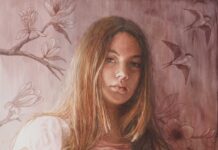

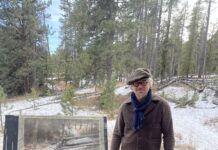




I absolutely LOVE Julie Gilbert Pollands watercolors ! I love her style . I’m trying to teach myself this medium. I will look for her books & videos. I’m a retired Art teacher, currently enjoying painting.
I love the “driving a boat” analogy! Excellent.